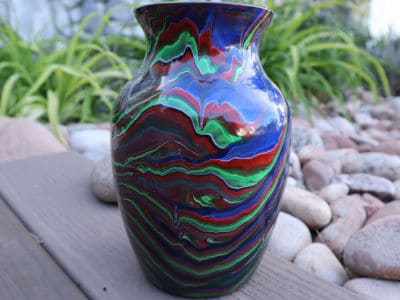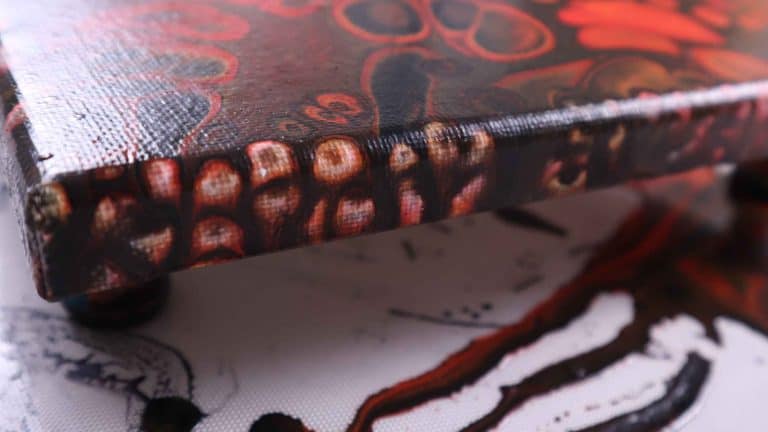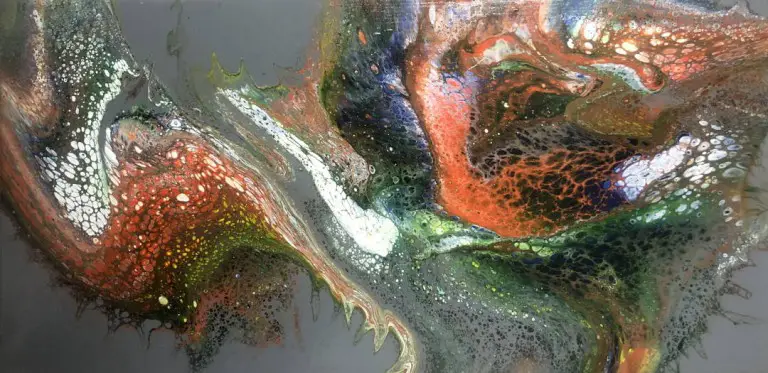Is Acrylic Paint Safe?
As a father of two with an extensive extended family which lives close by, my home has a lot of people going to and fro on any given day. My wife and I are constantly thinking about things that could be a danger to our family or friends in and around our household .
The amount of traffic through my home combined with my recent addiction to acrylic painting makes a situation where I need to be fully cognizant of any hazard my new hobby poses to me and my family.
Is Acrylic Paint Safe? Acrylic paint is generally very safe. Unlike oil based paints, acrylic paints are made from water based solvents. It is recommended that you always read the label of paints, mediums, and accessories that you use and to follow the instructions provided by the manufacturers.
In additional to reading the warnings on labels, you should take some time to familiarize yourself with common practices for keeping you and those around you safe. I have provided a short list of things that have helped me make my budding acrylic painting passion as safe as possible.

Acrylic Paints are Made of Water Based Solvents
Acrylic paint is the combination of a color pigment and an acrylic polymer emulsion. Don’t worry, I didn’t know what that meant either so I did a little research.
An emulsion is a mixture of two liquids that don’t normally mix. Milk is an example of an emulsion as it a combination of milk and fat. Put together, these two substances would normally separate. Mixed via a specific scientific process, the fat is suspended in the water in a way that makes it appear to be a single liquid.
Acrylic is a plastic substance. It is made from methyl methacrylate, or MMA, which is a colorless liquid. MAA does not easily yellow when exposed to sunlight and is highly resistant to weather damage. When dry, it hardens into a solid. These properties, paired with it’s non-toxic nature, make it an ideal material to use in painting applications.
As mentioned above, acrylic paint in an emulsion of acrylic and polymer. This emulsion or solution can be dissolved by water, and therefore, is recognized as being water soluble. In addition, it is a perfect “binder” or connector for pigment/color. This mixture of color and binder yields the acrylic paint you are familiar with today.
A very similar paint type — latex — is used in many common applications including home interior and exterior paint. Some lesser quality paints use Vinyl or PVA resins, which are also plastic-like substances, to help decrease the costs of making acrylic paint.
Cleaning Up Acrylic Paint
As was mentioned above, acrylic paint is water soluble and can, therefore, be easily broken down by adding water.
The easiest way to clean up acrylic paint is by using warm soapy water. Gently rub the paint you want to clean with the warm soapy water and then rinse. Repeat as many times as is necessary.
Another common way to clean acrylic paint is to rub baby oil into the paint. To use this method, rub the baby oil into the paint slowly. Eventually, the paint will break up into smaller pieces and become suspended in the oil, which can then be wiped off altogether.
When acrylic paint dries, it turns into a solid material. This solid requires additional effort to be disconnected from the surface. To clean up dried acrylic paint on your skin, rubbing gently for an extended period of time will help pull the dried acrylic out.
To clean other more stubborn surfaces more rigorous methods may needed. An old toothbrush for smaller jobs and a bristle brush for the larger jobs can be used in addition to warm soapy water to pull the dried paint off of the affected area.
As a preventative measure, latex gloves or non-sterile disposable safety gloves can be worn to prevent contact with acrylic paint while working on your pour projects.
What to do if Acrylic Paint is Ingested?
If you or someone you know ingests a small amount of paint, think fingernail size or less, you should generally have nothing to be concerned about. Wash any additional paint off and drink a modest cup of water.
In case of allergic or other reactions, the individual should be monitored for at least a few hours until the paint passes through their system.
Consuming or ingesting larger amounts of acrylic paint or getting paint in your eye can be dangerous, and you should immediately consult your local primary care physician or Poison Control.
In the case of Poison Control, US residents are encouraged to access an online tool called webPOISONCONTROL or to call 1-800-222-1222. The web portal or the agent on the phone can help you quickly determine the best course of action for your situation. This service is confidential and free of charge.
“Known to Cause Cancer in the State of California” Warning Label
Many labels today contain a warning similar to the following. “Items in this container may contain chemicals or substances known the State of California to cause cancer, birth defects, or reproductive harm.”
This warning is a requirement derived from the California Safe Drinking Water and Toxic Enforcement Act of 1986. This warning must be provided on anything that includes an item from a list the state maintains of around 900 chemicals. This list changes periodically. As of August 2018, this warning is required to be much more specific due to new legislation.
This list includes items like coffee which naturally creates what are considered hazardous materials during the roasting process. In many cases companies are removing these substances from their products even though they only have minuscule amounts of these items present — thus removing the requirement to print the warning on their packaging.
Some of the pigments used to create various colors are made from, or partially made from, items on this list and thus require the warning if sold in California. It is recommended that you research for yourself the affects of these items and use proper caution and care when using them.
Conclusion
Ultimately, acrylic paints very safe when used properly. Always follow the manufacturer recommendations when using acrylic paints. Appropriate use of acrylic paints followed by proper cleaning and storage of your paints will result in a safe environment to enjoy this amazing artistic medium.
Related Questions
Should I wear a mask when spraying or airbrushing acrylic paints? Appropriate safety equipment should always be worn when spraying or airbrushing acrylic paints including a mask and goggles. While the paint may not be toxic, spraying paint causes paint particles to be suspended in the air, which without safely equipment, will ultimately end up in your lungs or eyes over time.
Can I paint my child’s face with acrylic paints? You should not use acrylic paint for application directly to the skin. While acrylics are generally safe, some pigments are known to be toxic. Some of these toxins can be absorbed through the skin. In most cases they cause minor irritation, but other symptoms are possible.







Sir, just a week ago, I was busy doing some lanscape or beach scape Acrlyic paintings on Canvas boards. After a few days I found blisters like rash on my Right hand Fingers which were very itchy and painful ti some extent. Was it due to having used Acrylic paints and what is the remedy and what should I use while painting such landscapes as I am very interested in painting such scenes? Wilfred
Just wanted to start with a disclaimer that I am not a doctor and you should consult your medical adviser. Allergies to acrylic paint can come from a number of places including the pigment and the binders used in the paint production. My recommendation would be to not use the paint brands that you were using if you can identify which one caused the rash. You could also try using washable tempera paints also as the binder is organic instead of synthetic like most acrylics.
Definitely start using gloves and a respirator when using acrylics. No point in leaving anything to chance with something like this.
David I just subscribed , hope it is free. please tell me if it is not. I was wondering how to get the cheat sheet you mentioned in your you tube tutorial. Is there a charge for that???
Subscriptions are definitely free to YouTube or to the blog feed. You can get the cheat sheet by searching for the article “How much paint to use for an acrylic pour” on this website. I can’t put in the link here as I have that turned off in comments to keep the spam/viruses away.
David since acrylic is a plastic substance…..is it a problem to clean brushes and paint dishes…….and wash the acrylic paints down the drain and into the eco/water system…….any studies on this that you are aware of?………thanks………mm
Golden has a great write up about how to dispose of water infused with acrylic paint. You definitely don’t want to put that down the drain if you can help it Michael.
is it safe to mix acrylic paint, floterol and another professional medium? As far as chemical reactions go…. ive mixed (and seen you mix) various brands of paint with various mediums. Ive mixed floterol and glue together as mediums as well. im scared to mix floterol with other professional medium as I am not sure if it is chemically safe to do so. i am particularly interested in mixing with liquitex gloss and artist loft.
Yes it is safe Tara. I have done it a ton of times with all sorts of mediums without any problems. However, I generally don’t much of other pouring mediums in with Floetrol unless I am adding a tiny bit (1/10 or so) of a shiny medium to keep the dry result from being too matte looking and to add a little additional strength.